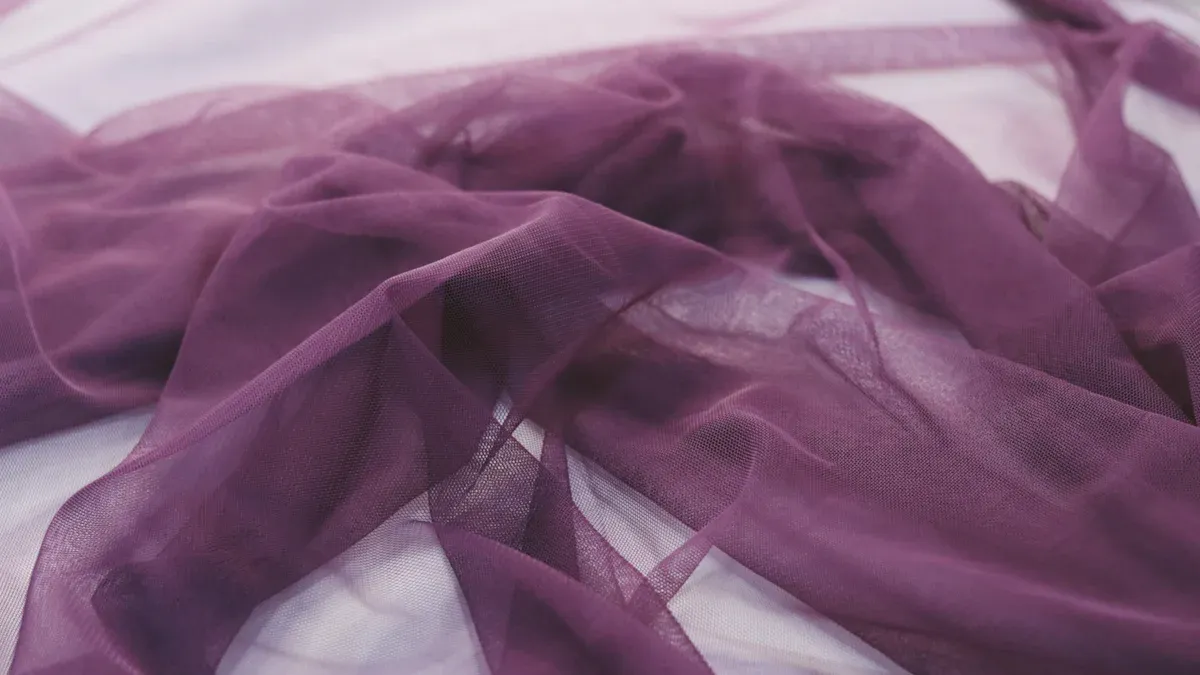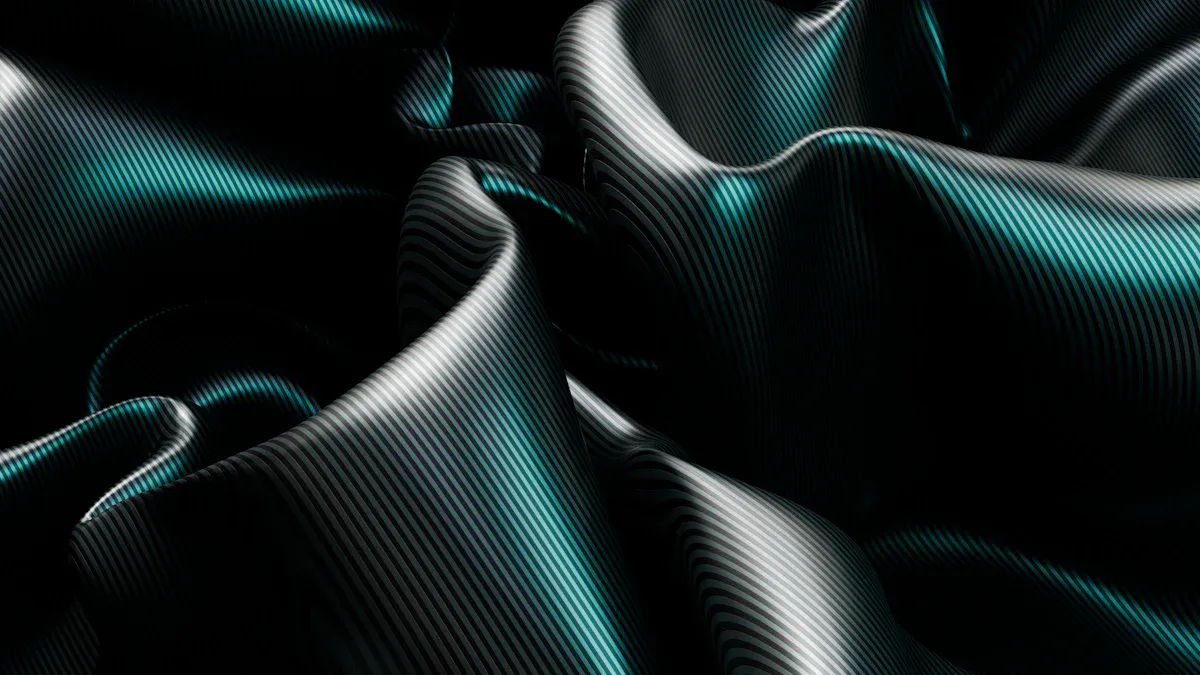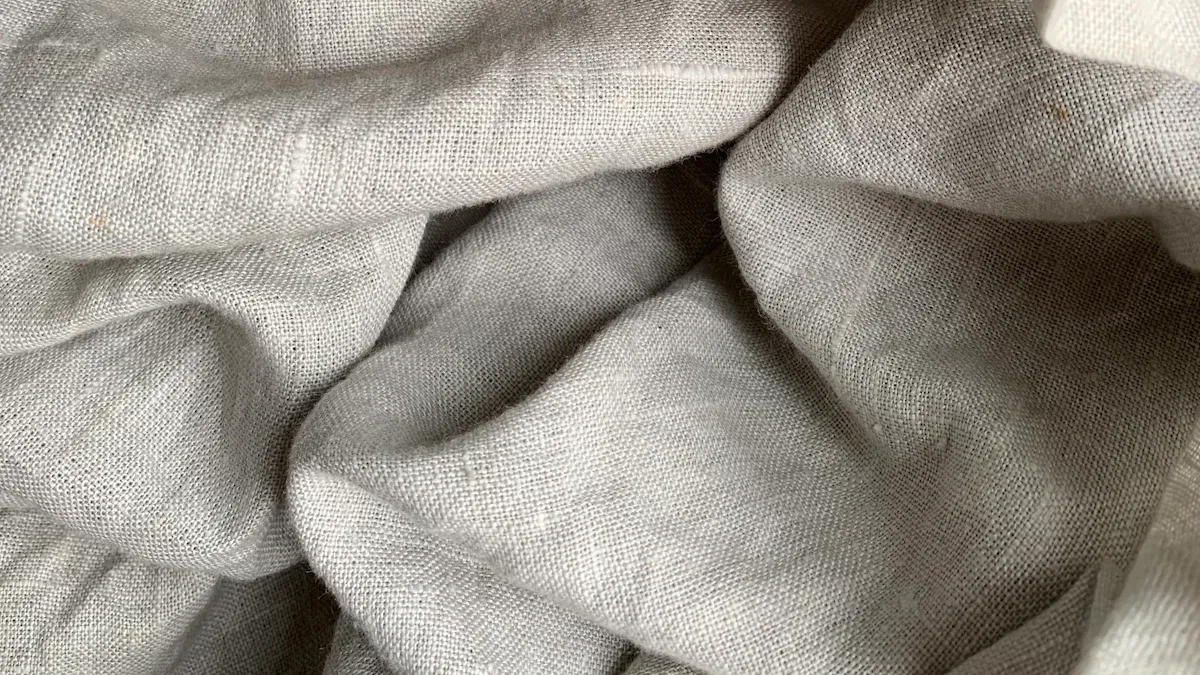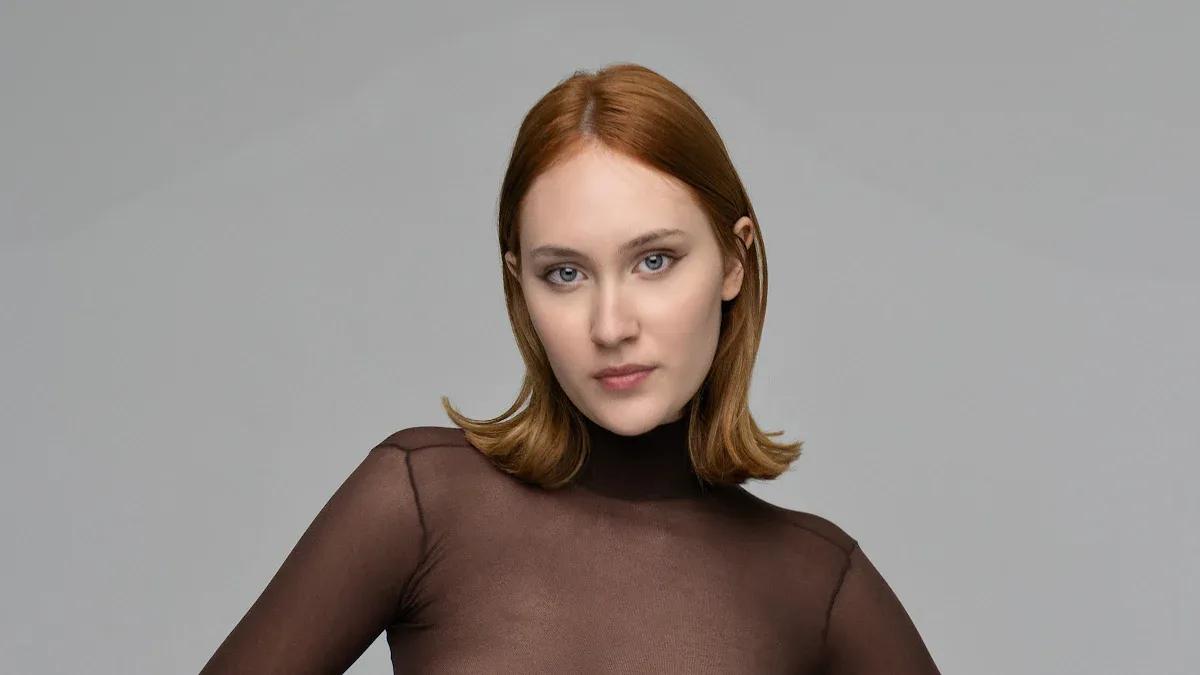
Stretchable mesh fabric is transforming the fashion and sportswear industries. Market demand continues to surge, with the global stretch mesh fabric sector expected to nearly double by 2032 as consumers seek breathable, moisture-wicking mesh textiles for active lifestyles. Brands now use innovative stretch mesh fabric blends like spandex and recycled fibers to deliver greater comfort, durability, and sustainability. Mesh advances allow apparel to move with the body, enhance performance, and support eco-friendly choices. These trends make stretch mesh fabric essential for modern, versatile wardrobes.
Key Takeaways
- Stretchable mesh fabric combines materials like nylon, polyester, and spandex to offer breathability, flexibility, and durability for active and stylish wear.
- In 2025, brands use advanced technology and recycled fibers to create eco-friendly, high-performance mesh fabrics with bold colors and custom designs.
- Mesh fabric’s four-way stretch and moisture-wicking keep wearers cool, dry, and comfortable during sports and daily activities.
- Designers apply mesh fabric in versatile ways, from everyday athleisure to high-fashion and team sports uniforms, supporting movement and style.
- Consumers and brands value sustainable sourcing, ethical supply chains, and customization options that enhance fit, function, and environmental responsibility.
Stretchable Mesh Fabric: Composition and Properties
Mesh Fabric Structure and Materials
Mesh fabric stands out in both fashion and sportswear because of its unique structure and blend of materials. The open-knit design creates a net-like pattern, making mesh fabric lightweight and highly breathable. This structure allows air to flow freely, keeping wearers cool and comfortable during any activity.
The most common materials in mesh fabric stretch include nylon, polyester, and spandex. Nylon spandex mesh fabric offers exceptional strength and elasticity, making it perfect for performance clothing and netting. Polyester mesh fabric provides durability, a lightweight feel, and resistance to wrinkles and stains. Spandex, also known as elastane or Lycra, gives mesh fabric stretch its four-way flexibility, which is essential for snug-fitting garments like leggings and athletic apparel. Many brands now use recycled polyester to create eco-friendly mesh fabric without sacrificing quality or resilience.
Power mesh, a blend of nylon and spandex, delivers extra stretch and support. Designers often choose this mesh spandex fabric for sports bras, dance costumes, and shapewear because it combines flexibility with a lightweight feel.
| Material Type | Key Properties | Typical Uses |
|---|---|---|
| Nylon/Lycra | Strong, elastic, 4-way stretch | Performance clothing, netting |
| Polyester/Spandex | Durable, lightweight, 50% 4-way stretch | Activewear, swimwear |
| 100% Polyester | Durable, lightweight, non-stretch | Industrial textiles |
Unique Performance Features of Stretch Mesh Fabric
Mesh fabric stretch technology brings unmatched functionality to modern apparel. Unlike traditional mesh, stretchable mesh fabric uses a higher percentage of spandex, especially in nylon spandex mesh fabric blends. This composition allows the fabric to stretch in all directions and return to its original shape, providing both support and freedom of movement.
Mesh fabric stands apart for its breathability, moisture-wicking ability, and lightweight construction. The open-knit structure lets air circulate, keeping the body dry and cool during intense workouts. Mesh spandex fabric also offers compression and body-shaping properties, making it ideal for sportswear, lingerie, and shapewear. The combination of mesh fabric stretch and quality materials ensures garments remain durable, flexible, and comfortable.
Mesh fabric’s versatility extends to both fashion and sportswear. Designers value its elastic and breathable material for creating stylish, functional pieces that adapt to any activity. Mesh fabric stretch supports a full range of motion, while finishes like antimicrobial or UV resistance add extra functionality. These features make mesh fabric a top choice for brands focused on quality and performance.
2025 Trends in Stretchable Mesh Fabric
Innovative Materials and Mesh Fabric Stretch Technology
In 2025, brands lead the way with new materials and advanced stretch mesh fabric technology. They blend fibers like polyester, nylon, and spandex to create mesh fabric that stretches in every direction. This approach gives designers more freedom to shape garments for comfort and performance. Mesh fabric stretch technology now includes four-way stretch, which means the fabric moves with the body during any activity.
Manufacturers use digital printing to add high-resolution images, logos, and even 3D-effect patterns directly onto mesh. This process opens endless design possibilities for both fashion and sportswear. Fiber blending and new knitting methods allow brands to adjust the density, thickness, and stretchability of mesh fabric. Custom dyeing techniques offer a wide range of colors, from classic Pantone shades to unique custom hues. These innovations help brands deliver mesh fabric that meets the needs of athletes, fashion lovers, and everyone in between.
Designers now explore innovative uses of mesh fabric, such as geometric patterns and tactile textures, to create standout pieces for both the runway and the gym.
Sustainability and Eco-Friendly Mesh Fabric Solutions
Sustainability shapes every step of stretch mesh fabric production in 2025. Brands use recycled mesh fabric made from post-consumer plastic waste, like plastic bottles. This practice reduces waste and conserves natural resources. It also lowers the carbon footprint compared to traditional mesh fabric production. Companies like Fujian Eternes Industry & Development Co., Ltd. set the standard by using advanced knitting, dyeing, and resource management to create high-quality sustainable textiles.
- Recycled mesh fabric supports the circular economy by minimizing waste and enabling closed-loop recycling.
- New supply chain technologies, such as advanced sorting, chemical recycling, and blockchain, improve material quality and traceability.
- The fabric keeps its best features—breathability, lightweight feel, durability, and flexibility—so brands do not sacrifice performance for sustainability.
- Recycled mesh fabric appears in fashion, athletic wear, and even automotive interiors, helping reduce environmental impact while meeting consumer demand for eco-friendly products.
Printing methods also change. Brands now use recyclable and renewable materials, eco-friendly inks, and substrates to lower their environmental footprint. Digital printing and automation make production more efficient and reduce waste. Localized production, made possible by digital printing, cuts shipping emissions and supports environmental goals. These steps help the textile industry meet the growing demand for sustainable products while keeping quality and scalability high.
Advanced Manufacturing and Customization Techniques
Advanced manufacturing techniques transform how brands create stretch mesh fabric. 3D printing and robotic fabrication in sandwich mesh technology allow for intricate and on-demand production. These methods let manufacturers use different core materials to meet specific needs, such as reducing weight or increasing strength. This flexibility speeds up design, shortens lead times, and supports sustainable manufacturing.
- Digital printing lets brands apply detailed images and patterns directly onto mesh fabric, including 3D effects.
- Fiber blending and changes in weaving or knitting allow for custom density, thickness, and stretchability.
- Custom dyeing offers a wide color palette, from standard to unique shades, matching any brand’s vision.
- 3D pattern customization and advanced weaving create complex designs, improving both look and feel.
However, advanced customization can increase production complexity and costs. For example, computerized embroidery of thermoplastic threads can adjust stiffness and stretchability, but denser stitching takes more time and may risk fabric damage. Machine limitations, such as thread size and working area, can affect efficiency. Brands often turn to roll-to-roll knitting, weaving, or 3D printing to keep production fast and scalable. Despite these challenges, advanced techniques give brands the power to deliver high-quality, customized mesh fabric for every application.
Design Aesthetics and Mesh Fabric Color Trends
Designers in 2025 push the boundaries of stretchable mesh fabric with bold colors, futuristic finishes, and inclusive styles. They know that color and design choices shape how people feel and perform in their clothes. Mesh fabric now stands at the center of this creative revolution, offering endless possibilities for both fashion and sportswear.
Leading Color Palettes and Inspirations
The year 2025 brings a fresh wave of color palettes inspired by urban life, nature, global cultures, and technology. Designers select hues that energize, calm, or inspire confidence. The following table highlights the most influential color trends and their inspirations:
| Color Trend Palette | Inspiration & Theme | Key Colors & Patterns | Recommended Fabrics & Design Features |
|---|---|---|---|
| Industrial Essence | Urban landscapes, utilitarian design | Vivid oranges, greens, muted grays, bright blue | Soft interlock knits, bonded jerseys, smooth-hand fabrics; bold geometric patterns, clean seams, easy layering |
| Earthbound Reverie | Nature, slow-living, sustainability | Soothing pastels, soft beiges, muted pinks, olive greens | Recycled polyester, recycled nylon, cotton, bamboo; relaxed layering, botanical prints, ombré effects |
| Global Kaleidoscope | Diverse cultures, folk patterns, geometric motifs | Warm terracotta, neutrals, crimson red, teal, indigo, violet | Jacquard knits, fleece, second-skin stretch interlock; layering textures, embroidered details, bold prints |
| Lumina Pulse | Technology integration, futuristic minimalism | Muted lavender, icy white, pastel green, vibrant pink, blue | Textured knits, 3D knits, double knits; streamlined silhouettes, laser-cut patterns, reflective trims, holographic finishes |
Designers use these palettes to create mesh garments that stand out on the street, in the gym, or on the runway. They combine vivid oranges and blues for an urban edge, or choose soft pastels and botanical prints for a calming, eco-friendly look. Futuristic finishes like holographic coatings and reflective trims add a high-tech touch to performance wear.
Popular Motifs and Fabric Features
Mesh fabric in 2025 features more than just color. Designers experiment with patterns, textures, and finishes to create unique looks. The table below showcases the most popular palettes, motifs, and fabric features:
| Color Palette | Popular Colors & Themes | Design Motifs & Patterns | Fabric Types & Features |
|---|---|---|---|
| Dreamscape | Ethereal pastels, bold futuristic hues, earthy accents | Holographic accents, CGI-inspired swirls, biomorphic prints | Glossy stretch satins, lightweight mesh, shimmer finishes, metallic/iridescent coatings |
| EcoTide | Rich greens, browns, sandy neutrals, vibrant oranges, deep reds, oceanic blues | Organic motifs like leaf imprints, wave-inspired lines | Sustainable recycled fibers, textured knits, biodegradable poly interlock, eco-certified fabrics |
| Coastal Joy | Bold primary hues, soft pastels, calming blues, mint tones | Retro-modern patterns: stripes, graffiti-inspired prints, geometric shapes | Compression mesh, boardshort fabrics, recycled compression mesh, UV-protected textured swim fabrics |
| Mystic Shores | Deep grounding hues, soft pastels, muted earthy shades | Ombre fades, ripple-like textures, botanical-inspired cover-ups | Textured knits, natural fibers, lightweight tricots, recycled textured lurex blends |
| Vibrant Horizons | Bright, saturated, playful dynamic hues | Bold color-blocking, digital glitch effects, brushstroke designs | High-performance fabrics with UV resistance, high elasticity, moisture-wicking, chlorine-resistant recycled swimwear fabrics |
Designers love to use holographic accents and CGI-inspired swirls for a futuristic vibe. They also bring back retro patterns, stripes, and graffiti-inspired prints for a nostalgic feel. Mesh fabric with shimmer finishes or metallic coatings catches the light and draws attention. Eco-friendly options like recycled fibers and biodegradable knits support sustainability without sacrificing style.
Key Design Directions for 2025
Brands focus on more than just looks. They design mesh apparel that fits every body and every lifestyle. The most important design directions include:
- Inclusive sizing and adaptive designs. Stretchable mesh with adjustable fits and simple closures works for all body types and abilities.
- Bold colors and prints. Neon shades, digital prints, and dramatic patterns replace plain neutrals.
- Multi-functional and versatile pieces. Mesh garments transition from gym to daily wear, like reversible leggings and removable hoodies.
- Lightweight and breathable fabrics. Sweat-wicking, antimicrobial finishes, and mesh panels boost comfort and performance.
- Retro and nostalgic designs. Designers revive 80s and 90s styles, neon colors, and vintage logos, blending old-school looks with modern performance.
Designers use the ‘Kinetic Palette’ to energize their collections. This palette features bold, dynamic colors that encourage movement and creativity. Mesh fabric in these shades helps athletes and fashion lovers feel confident and ready for action.
Stretchable mesh fabric in 2025 stands out for its color, comfort, and versatility. Brands that embrace these trends create products that excite customers and set new standards in both fashion and sportswear. Mesh fabric’s design potential has never been greater—now is the time to make bold choices and lead the way.
Performance Impact of Stretch Mesh Fabric
Enhanced Breathability and Comfort
Stretch mesh fabric stands out as a leader in breathability-based clothes. The open weave design creates small gaps that let air flow freely. This airflow keeps the body cool and dry, even during intense activity. Synthetic fibers like polyester, nylon, and spandex work together to boost breathability and comfort. These fibers transport sweat from the skin to the surface, where it evaporates quickly. This process helps maintain a dry and fresh feeling throughout the day.
Athletes and active individuals value the lightweight and non-bulky nature of mesh. The fabric feels soft against the skin and does not restrict movement. Mesh fabric stretch technology allows for freedom of movement, making every action feel natural. People who wear mesh fabric in sports or daily life notice less overheating and more comfort. The quick-drying properties of stretch mesh fabric add another layer of functionality, keeping wearers comfortable after sweating or exposure to moisture.
Mesh fabric delivers functionality and comfort in every stitch. The lightweight structure supports easy layering, while the stretch ensures a snug yet flexible fit. These qualities make mesh a top choice for those who demand high performance from their apparel.
Durability and Flexibility in Mesh Fabric Stretch
Durability defines the value of stretch mesh fabric. Brands choose materials like nylon and polyester because they resist wear and tear. These fibers help mesh fabric maintain its shape and strength, even after many washes. Mesh fabric stretch technology ensures that garments recover their original form after stretching. This resilience means clothes last longer and look new, even with frequent use.
Flexibility is another key advantage. Mesh fabric stretch allows garments to move in every direction. This four-way stretch supports a full range of motion, which is vital for sports and active lifestyles. Mesh adapts to the body’s movements, reducing the risk of rips or sagging. The combination of durability and flexibility makes mesh a multifunctional fabric for both fashion and sportswear.
Mesh fabric also stands up to repeated washing and physical activity. The strong fibers prevent pilling and fading, so garments keep their appearance and performance benefits over time. Mesh fabric stretch technology gives designers the confidence to create products that meet the highest standards for durability and flexibility.
Versatility for Fashion and Sportswear Performance
Stretch mesh fabric offers unmatched versatility for both fashion and sportswear. Designers use this versatile material in everything from elegant evening gowns to high-performance athletic gear. Mesh adapts to different colors, patterns, and weights, making it suitable for a wide range of styles and uses.
The lightweight, breathable, and flexible nature of mesh supports comfort and ease of movement. Mesh fabric stretch technology allows garments to expand and recover in all directions. This feature is essential for athletes who need full mobility and for fashion lovers who want stylish, comfortable clothes. Moisture-wicking capabilities help keep wearers dry, boosting performance during workouts or competitions.
Mesh brings a unique look to fashion. Its translucent and sheer qualities add flair to lingerie, dancewear, and runway pieces. Brands like EcoFit Design and Lumina Couture use stretch mesh fabric to combine style with high performance. Mesh fabric’s adaptability and functionality make it a favorite for designers who want to create versatile applications in their collections.
Mesh stands as a symbol of innovation in the textile world. Its blend of breathability, durability, and flexibility ensures that every garment delivers top performance. Mesh fabric stretch technology continues to shape the future of both fashion and sportswear, offering endless possibilities for creative and functional design.
Fashion Applications of Stretchable Mesh Fabric
Everyday Apparel and Athleisure
Stretchable mesh fabric has become a staple in fashion and everyday wear. Designers use it in leggings, fitted tops, and dancewear because it offers flexibility and a snug fit. The fabric’s breathability keeps wearers cool during daily activities or workouts. Polyester and spandex blends provide lightweight comfort and durability, making these garments easy to care for and long-lasting.
Consumers value several features in these applications:
- Breathability for comfort in warm conditions
- Lightweight feel that reduces bulk
- Durability for repeated use
- Quick-drying and easy cleaning
People also prefer mesh fabrics that feel soft on the skin and allow for free movement. Four-way stretch and ergonomic tailoring help create a flattering fit. Mesh panels add extra ventilation, while seamless stitching prevents chafing. These qualities explain the wide applications of stretch mesh in athleisure and everyday clothing.
High-Fashion and Runway Mesh Fabric Styles
High-fashion designers embrace stretchable mesh fabric for its unique look and performance. On the runway, brands like Rui Zhou use fine, web-like mesh to create body-hugging silhouettes. The mesh acts as a second skin, blending sheer textures with bold cut-outs and pearl accents. Designers explore the tension between softness and structure, using mesh to express both vulnerability and strength.
This application of mesh fabric allows for creative designs that highlight the body’s shape. The fabric’s stretchability supports intricate patterns and cut-outs, making each piece stand out. Mesh fabric’s delicate texture and flexibility inspire designers to push boundaries in high-fashion collections.
Notable Mesh Fabric Products and Brands, Including Suerte
Suerte Textile stands out for its innovative use of stretchable mesh fabric in sportswear and fashion. The company offers polyester-spandex mesh with four-way stretch, excellent breathability, and strong durability. Suerte’s fabrics feature small-eyelet designs that boost airflow and moisture evaporation. Brands can customize color, weight, and finishes, including anti-bacterial and UV protection options.
Suerte uses advanced knitting technology and strict quality control to ensure consistent performance. Their technical support and fast sample services help brands create high-performance apparel. These features make Suerte a leader in the application of mesh fabric for both athletic and fashion-forward products.
Sportswear Applications of Stretch Mesh Fabric
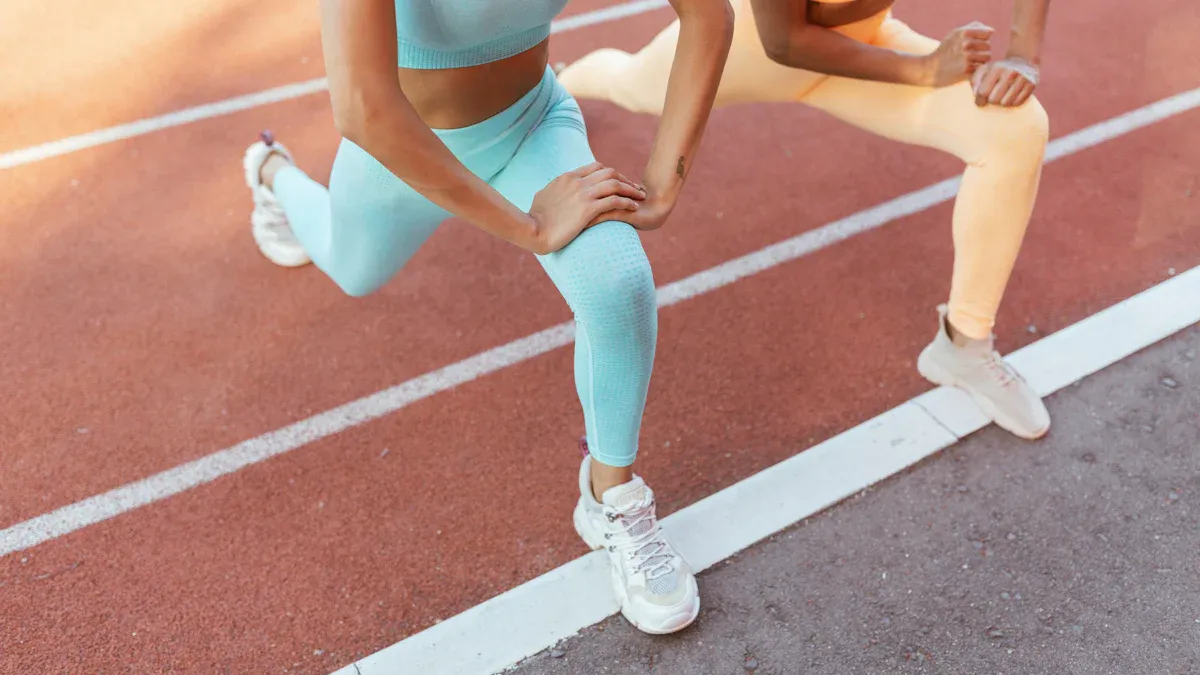
Performance Gear and Activewear
Stretch mesh fabric has become a game-changer in high-performance sportswear. Athletes choose gear made from this material because it delivers comfort, flexibility, and durability. The fabric’s open structure allows air to flow, keeping the body cool during intense workouts. Moisture-wicking technology pulls sweat away from the skin, helping athletes stay dry and focused. Spandex blends add stretch, so wearers can move freely and perform at their best.
Here is a table showing the main benefits athletes experience with stretch mesh fabric:
| Benefit | Explanation |
|---|---|
| Moisture-wicking | Pulls sweat away from the body, keeping wearers dry and comfortable |
| Breathability | Allows air to circulate, preventing overheating and promoting ventilation |
| Durability | Withstands repeated washing and harsh conditions |
| Flexibility | Provides superior stretch and freedom of movement |
| Comfort & Fit | Offers a form-fitting feel that supports dynamic activities |
These features make stretch mesh fabric ideal for a wide range of applications, from running shorts to training tops.
Team Uniforms and Custom Mesh Kits
Teams rely on stretch mesh fabric for uniforms and custom kits. Polyester mesh with small perforations keeps players cool and light on their feet. Moisture-wicking properties help manage sweat, while the fabric’s stretch supports quick direction changes and full mobility. Teams can customize uniforms with names, numbers, and logos using sublimation printing, which creates vibrant, long-lasting designs.
- Jerseys use lightweight, breathable mesh for comfort.
- Stretch mesh allows for unrestricted movement in all sports.
- Customization options boost team pride and unity.
- Advanced manufacturing ensures durability through tough games and frequent washes.
Custom mesh kits give teams a professional look and help them stand out on the field.
Leading Sportswear Brands and Products Featuring Suerte
Many leading brands trust Suerte’s stretch mesh fabric for their sportswear lines. Suerte’s advanced production methods deliver consistent quality and fast turnaround. Brands choose Suerte for applications like training gear, team uniforms, and activewear collections. The company’s expertise in digital printing, dyeing, and embroidery allows for unique, high-quality designs. Suerte’s mesh fabric stands out for its breathability, stretch, and durability, making it a top choice for high-performance sportswear.
Sourcing and Customization of Mesh Fabric in 2025
Options for Brands and Designers
Brands and designers in 2025 have more sourcing options than ever before. They can find high-quality stretchable mesh fabric through trade shows, online platforms, and direct relationships with manufacturers. Many choose to verify supplier reliability by checking certifications, references, and conducting background checks. Quality control remains a top priority. Most brands request samples and test fabrics for shrinkage, colorfastness, and durability before placing large orders.
- Trade shows and online sourcing platforms connect brands with new suppliers.
- Direct manufacturer relationships help secure exclusive fabrics and better pricing.
- Smaller brands often negotiate minimum order quantities or work with jobbers to access premium mesh without large commitments.
The jacquard mesh market now thrives on demand for stretchable, moisture-wicking, and design-rich fabrics. AI-driven weaving technologies allow precise pattern customization and faster production cycles. Sustainable sourcing grows in importance, with recycled polyester yarns and biodegradable fibers leading the way. Investment in smart factories and digital design platforms supports both quality and customization.
Customization Choices for Consumers
Consumers in 2025 expect apparel that fits their needs and style. Popular customization choices include AI-powered design for improved fit and virtual try-ons for a personalized experience. Many prefer stretch mesh and power mesh blends for comfort, support, and flexibility. Wearable tech features, such as biometric tracking and posture correction, now appear in mesh fabrics.
- Adjustable features like elastic waistbands and stretch panels offer adaptability.
- Soft, flexible fabrics suit different body types and activities.
- Eco-friendly coatings, water resistance, and UV protection add value.
- Color trends range from high-energy brights to nature-inspired tones.
- Multi-functional designs and layering options blend performance with lifestyle.
Consumers also look for sweat-wicking, breathable, and fast-drying mesh fabrics. Many choose recycled polyester or natural fiber blends for sustainability. Transparency about eco-friendly efforts builds trust and loyalty.
Ethical and Transparent Mesh Fabric Supply Chains
Leading brands measure the environmental impact of their mesh fabrics using Life Cycle Analysis (LCA). They assess carbon emissions, water use, and energy consumption from raw material to end-of-life. Many use sustainability indexes like the Higg Materials Sustainability Index and the Made-By Environmental Benchmark for Fibers to compare fabric choices.
Brands also consider garment care, microplastic shedding, and recyclability. Companies such as Patagonia and Veja set goals for recycled content and responsible sourcing. They invest in R&D for bio-based and recycled materials. By combining LCAs, sustainability indexes, and broader environmental goals, brands ensure ethical and transparent supply chains. This approach helps brands meet consumer demand for responsible, high-quality mesh fabric in 2025.
Stretchable mesh fabric leads the way in 2025 with bold colors, eco-friendly materials, and smart technology. Brands use recycled and bio-based fibers to create high-performance, sustainable apparel. Mesh fabrics now feature wearable tech for comfort and biometric tracking.
- Brands benefit from AI-driven trend forecasting and data analytics.
- Consumers enjoy better comfort, mobility, and interactive features.
- Waste-reducing technologies and waterless dye methods support sustainability.
- Leading brands combine ecological responsibility with top design.
Now is the time to embrace stretch mesh fabric innovations for future-ready collections.
FAQ
What makes stretchable mesh fabric ideal for sportswear?
Stretchable mesh fabric offers breathability, flexibility, and moisture-wicking. Athletes stay cool and dry. The fabric moves with the body. Brands choose it for comfort and performance. Mesh fabric helps athletes perform at their best.
How can brands customize mesh fabric for their collections?
Brands select colors, patterns, and finishes. They use digital printing, embroidery, and dyeing. Suerte Textile provides quick sample verification and design support. Customization helps brands create unique products that stand out in the market.
Are eco-friendly mesh fabrics as durable as traditional options?
Yes. Eco-friendly mesh fabrics use recycled or sustainable fibers. These fabrics maintain strength, stretch, and breathability. Brands trust them for long-lasting performance. Eco-friendly options support sustainability without sacrificing quality.
Where can designers source high-quality stretch mesh fabric?
Designers connect with suppliers at trade shows or online. Suerte Textile offers a one-stop service. They provide fast proofing, reliable quality, and extensive customization. Designers benefit from direct communication and expert support.
Tip: Choose suppliers with advanced production and quick response times for the best results.

